[mashshare]
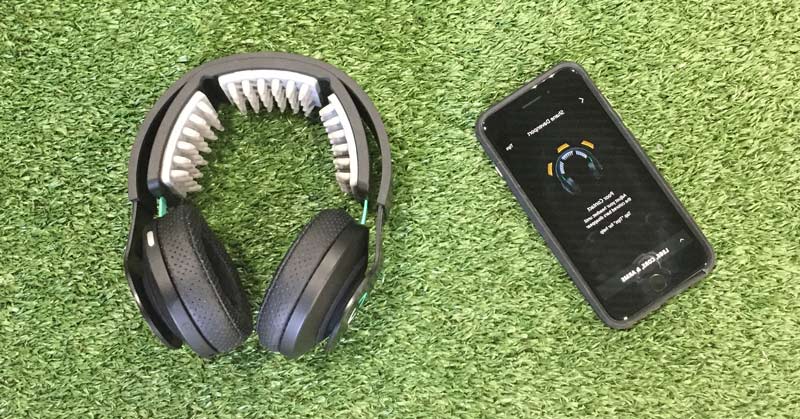
Athletes and coaches have tried nearly everything to find a competitive edge, and the rush for the next big thing has led me to Halo Neuroscience, a brain-stimulating tool for those looking to improve their performance. Two presentations during the CVASPS seminar intrigued me regarding “electrical athletes,” so after careful research, I decided to try brain stimulation again to see if I was missing something.
Brain stimulation, specifically transcranial direct current stimulation (tDCS), is growing in popularity, thanks to professional teams like the San Francisco Giants and private training facilities experimenting with it. We studied Halo Neuroscience’s Halo Sport system to see what is possible with brain stimulation and athletic performance.
In this article, I don’t focus so much on the product as I do on the process, meaning how someone theoretically harnesses the potential of brain stimulation in general. From the results of a few months of research and experimentation, I have a better idea of what is necessary to apply it to all sport science.
What Is Transcranial Direct Current Stimulation?
Transcranial direct current stimulation is exactly what it sounds like—pushing low levels of electrical current through the scalp. While there are new tDCS products on the market, tDCS itself is not new—like many trends in sport, it is just making a comeback. The theory is that after stimulating the brain, the athlete has a temporary window of enhancement to exploit for greater outputs (training) or inputs (learning) with their body and mind.
So far, much of the research isn’t conclusive as to whether the neurostimulation works with direct current, but like all things in science, it’s about the details and study designs. Outside of sport, the only hopeful findings I have seen are on depression and other disorders like schizophrenia. I was personally hoping that tDCS could help with Parkinson’s disease, but so far there is nothing conclusive on the efficacy of neurostimulation.
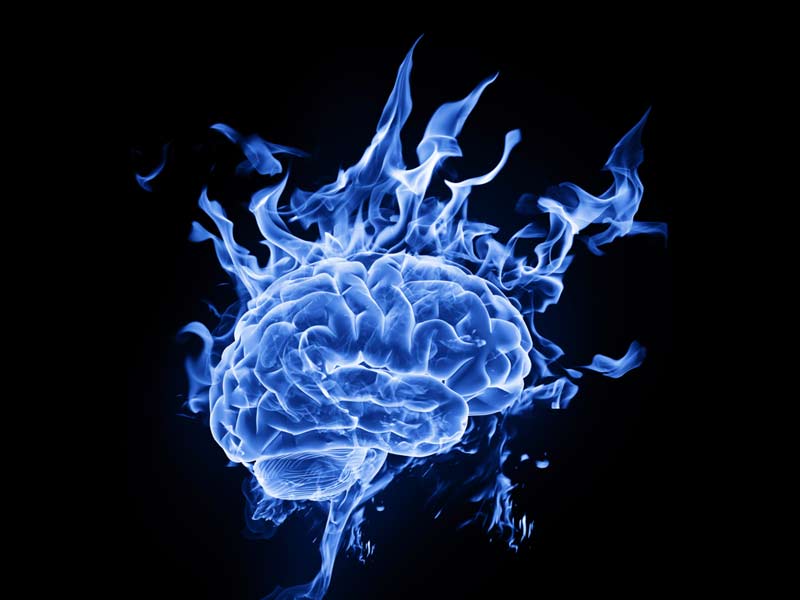
Most of the early questions coaches and average Joes have is on the safety of tDCS. My first fear was an obvious one: Would this product or family of systems “scramble” my athlete’s brain acutely or in the long run? Another fear I had was the use of electrical current causing a burn or similar, as I have seen some researchers with the scars to prove it.
As of today, the FDA and European agencies are not committed to a specific position on the classification of tDCS, and many systems are now on the consumer market. Much of the research also delineates the difference between anodal and cathodal tDCS, or positive and negative stimulation. Different types of stimulation theoretically influence the resting membrane potential, thus modulating the excitability of the neurons.
The most likely reason that tDCS is not more popular now is that the Cochrane summary shows the evidence is insufficient for managing symptoms of depression, the most promising area in the past. There are warnings on tDCS for at-risk users (such as the possibility of seizures for those with epilepsy) and other side effects like nausea and headaches. So far nothing in the literature hints that disastrous side effects are possible.
The argument is that tDCS is temporary, sort of like caffeine, and only provides a short window of benefit, so it’s up to the practitioner to create a method or technique for the transient benefits. On paper, this theory is a fair argument for limited results and only those that know how to create programs will benefit from the application.
How Does the Halo Neuroscience System Work?
The Halo Neuroscience system is basically a headset, similar to the Beats by Dre product you see everywhere. Halo systems are oversized headphones with one key difference: they have electrodes that look like rubber hair brushes that sit on the top part of the head. The smartphone app starts and stops the stimulation, and the product is designed to be used before training, whether it’s while playing the saxophone, practicing soccer, or crushing weights. The protocol is that you turn on the system for 20 or so minutes, and immediately afterward, the athlete is primed neurologically for enhanced learning and/or performance.
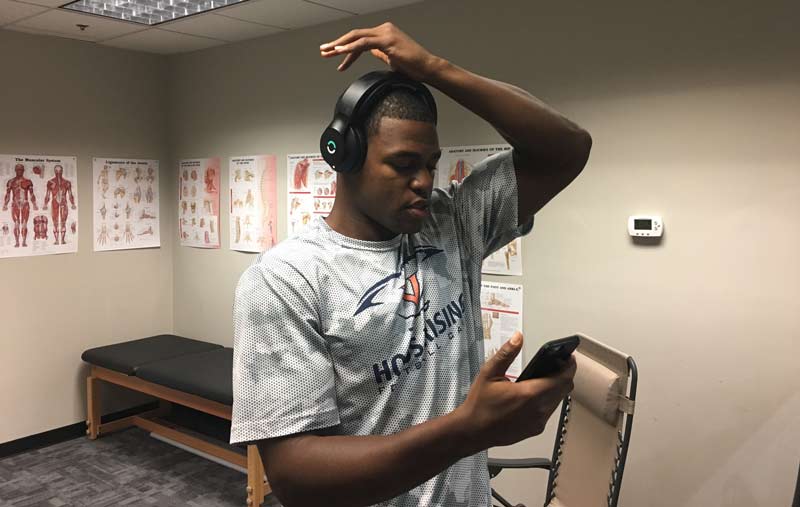
“Neuropriming” is the term Halo uses for the leveraging of the neuroplasticity of the brain and, in theory, using tDCS promotes a hyperplasticity to the athlete temporarily. During this period, athletes should practice or train normally, and in time they should get better or faster results from the use of the system. The company has initiated some partnerships with Sparta Science and other private facilities, and the advertisements and educational videos cite remarkable results with the system.
Barwis Methods claims their athletes are increasing power by 10%, and a cornerback for the soon-to-be Las Vegas Raiders added 6-8 inches to his standing vertical. With all of the testimonials and case studies, the use of tDCS looks very exciting, but I only trust what I see and even the best research to me is not a guarantee.
Does the Science Support Brain Stimulation and Sport?
After reading 40 studies sent by Derek Hansen, I was left more confused about how anyone can draw a clear conclusion on any of the studies relating to sport. Diseases and other health challenges have a connection to sport science, but I need good studies on sport and the research was scant at best. I went on PubMed and found a dozen studies or so on tDCS, with mixed results. Some showed nothing and some showed a clear improvement from the inclusion of brain stimulation. Every month, a study comes out, and each time a PDF enters my email inbox I read it immediately.
When I looked at the available research, it was difficult to create a continuum of effects as low-level changes are usual in a disease state, sedentary populations, and beginner exercisers. What I saw was some athletes or trainees responded favorably, even when they had some experience under the bar.
Recent studies have found that tDCS had no effect on athletes or regular Joes here, here, and here. What was interesting was that both low-level forces (balance) and maximal exertion failed to make a positive change, and one study even seemed to disturb or reduce performance with dynamic balance. A very interesting triple blind study on muscle force and tDCS resulted in no positive benefits for brain stimulation with healthy individuals.
What about the positive results with tDCS and athletes? A few studies, hot off the press, demonstrated that brain stimulation had a possible impact with strength and power, even in experienced lifting populations. A study published ahead of print in May 2017 showed promise for soccer athletes and isometric strength, but, again, the study design was limited due to the challenges of brain stimulation research design. Another study on cycling using heart rate and electromyography showed possible results with anodal tDCS, but with unclear mechanisms and a limited study design, the verdict is hard to support.

Based on the studies, it seems more benefits exist with brain and body tDCS than mental conditioning alone. Still, I was not confident that the studies that did show positive results were constructed right, because the challenges with sham controls and training protocols usually create outcomes that support a hypothesis. Sometimes coaches have to experiment and find out for themselves whether something is promising or a waste of time and money.
How I Investigated the Theory of Brain Stimulation and Applied the Science
My experience with technology and coaching, as well as some creativity, gave me a very unique perspective on what we should do with the Halo system. My gut feeling with any performance-enhancing device is that you must factor in placebo early, as athletes respond to nearly anything if they believe enough. Also, most testing in the lab is sterile and artificial, meaning what we learn from a cycling time trial may not help a running back in the chaos of the NFL. I have been constantly let down by teams and facilities that don’t think things through and provide very weak anecdotal information when confronted with questions.
Factor in #placebo early, as athletes respond to nearly anything if they believe enough, says @SPSmith11. Share on XTheoretically, if tDCS has a small benefit with athletes to enhance neuroplasticity or other performance areas of the brain, what are the best ways to integrate it? Based on the science shared earlier, I formulated three ideas that I wanted to explore. My hypothesis is that a poor study design can either create misleading speculation or taint the data. Here are my key questions:
- If a window of hyper-learning is created, and the coaching and training are terrible, could the athlete theoretically get worse?
- In regard to speed and power, if athletes are temporarily enhanced by masking fatigue, does this potentially harm the body in some way by pushing through when rest is a wiser option?
- When does tDCS start to hit a diminishing return or can it burn out an athlete by tinkering too much with Mother Nature?
I have more questions (some of them a little nefarious), but for the most part my main concern is protecting both the athlete and the training process. No matter what the training tool, recovery device, or even supplement, without a lot of thought given to employing new solutions, many well-intended products can backfire. I have seen countless technologies make athletes worse simply because the thought process lacked a solid strategy to properly apply the benefits.
The Creative Testing Ideas We Developed
Sham devices are a mixed bag of results because the athletes are always smarter and more responsive to placebos, good and bad. For example, if a sham device didn’t provide the same “simulation of stimulation” level experience, would the athlete respond more to the perceived higher current? What about telling the athlete the system does something different than performance, such as altering mood or perception of pain?
The core problem with devices is that creating a sham system in studies is not a perfect process. Supplements, specifically placebo pills, are far easier than placebo technologies.
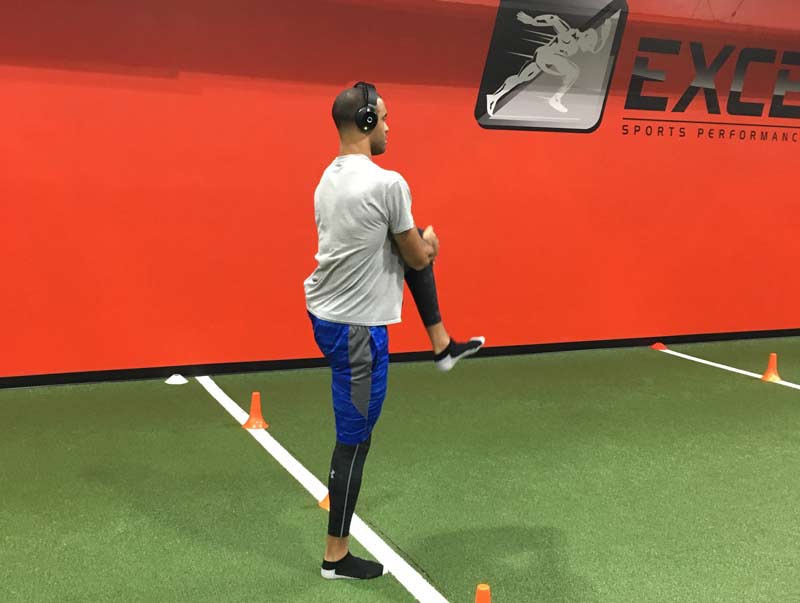
My second point is that the ownership of the training process when trialing a device or product requires deductive reasoning. Research is always going to be a leap of faith because most studies will try to isolate one variable to create a clear comparison. Take the heavy sled studies that show great promise with some athletes—a perfect example of a limited design and a necessary evil. Too many other variables teasing out what works is hard, but without other modalities included in the training, results artificially inflate many studies.
Also, be careful not to let bias sabotage results. I have very little emotional attachment to anything because I am a generalist and competitor. I don’t care what works; I care if it works better than other options. Coaches not interested in something new always tend to place the equipment change or different method in a no-win situation. This happens when coaches who are trying to just keep their heads above water have technologies or new approaches forced on them.
I don’t care what works; I care if it works better than the other options, says @SPSmith11. Share on XMy creative solutions are not something that will amaze anyone, but the ideas were clever enough to do the trick. What I did was a little unconventional: Instead of telling the athletes it was a stimulation device, we informed them it was a CNS fatigue measurement tool. The issue we had was some athletes already knew what the product was and we had to adjust by simply finding athletes who were not on Facebook or Instagram that much—an arduous ordeal, to tell the truth.
We just told some athletes upfront and saw how they responded, as many of the athletes we work with are constantly exposed to new ergogenic aids and likely have lost their arousal or placebo benefits because of disappointment from the past experiences. During training camps, many athletes respond well to tapering, as the volumes tend to drop when on the road. All of the details mentioned are a real monkey wrench due to drawing conclusions from data in a vacuum, and this the reason coaches and sport scientists need to work together more.
The Results of Halo Neuroscience and Other Systems
I will be upfront with you: It’s hard to tell both the rate of success and the magnitude of change if an athlete responds to the brain stimulation. We tried out another system outside of Halo, and a DIY (do it yourself) system, and found the conclusions to be too cloudy for comparison. The Halo Neuroscience product worked very well from a user experience perspective, as the product is a beautiful and well-designed device.
On the other hand, the athletes that used it found it strange to use large headphones during the warmup, and some liked it just for weight training. Only the Halo Neuroscience product provided a wireless experience that was practical for the field.
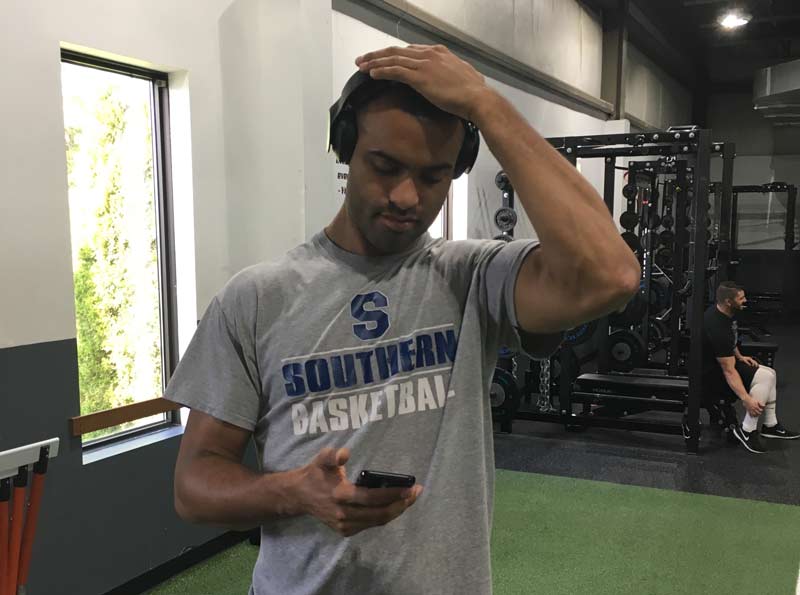
We created five categories of experiments during the few months of test-driving Halo. We looked at several combinations and areas of interest, such as will power, acute explosiveness, overspeed, learning rate, and retention of learning.
Will Power: Like most coaches, I went to the Wikipedia entry on tDCS a while ago and looked at what was promising and saw depression as a possible treatment. When athletes are fatigued, mood scores drop, so I figured that during heavy training periods, Halo could elevate the willingness to train so athletes are sharper. I don’t believe in masking perceptual fatigue to keep athletes going, as I think reaching deep in the dark netherworld is a good part of developing an athlete. Using the product compared to the controls showed a statistical difference, but we didn’t test anything exhaustive.
Acute Explosiveness: We did a CMJ test with a few athletes and could not replicate any of the experimental findings with power. It might be necessary to train with it for weeks to see any changes in the force-time curves of jump analysis. One athlete had a standing repeated bound test hit a personal best, but we don’t know what changed besides total distance. We do have a contact grid using Ergotest, but the issue is knowing where in the human biology the performance change happens outside of kinetic and kinematic data.
Overspeed: Several athletes achieved a personal best in flying sprints at training camps in Italy and Florida. Due to the small sample size and a lack of control, we can’t come to any conclusions, but the number of successful testing PRs was so exciting that we wanted to continue using the product. I am going to be testing with EMG for temporal changes in muscle activity next year with something more formal. With the stubbornness of maximal speed, anything that can tap into removing the “internal parking brake between the ears” would be a godsend. It should be noted, those that used caffeine all had great times, while those that didn’t and used stimulation didn’t have as great a performance.
Learning Rate: Finding out if it helps with learning skills or improvement is a very difficult way to assess efficacy of the Halo product or any tDCS system. It’s complicated to learn something new or improve what you know, and errors are hard to decipher when fatigue and coaching styles add so much complication. Most of the subjective feedback given without prodding is that athletes say things are easier to do. I have no way to measure this besides my eyeball test, but most of the feedback is that restrictions seem to be removed during warmup and early in the training. I think guarding for fatigue or past injuries is temporarily removed, in theory, but it could be placebo to those expecting a performance boost.
Retention of Learning: Due to the short testing time frame, we don’t know if athletes retained their skills better than their counterparts. I am interested in rust, or errors early in the next training year. There have been some rumors of athletes locking in skills, but so far I don’t see anything in either research or my own experiences to conclude athletes are returning what they learned earlier. The difficulty is knowing how to make a conclusion when athletes are practicing without the Halo system, as that may wash out the positive benefits of the system. Again, it is not easy to make finite conclusions about motor learning because most studies on learning are in areas that are not speed and power, like darts or archery.
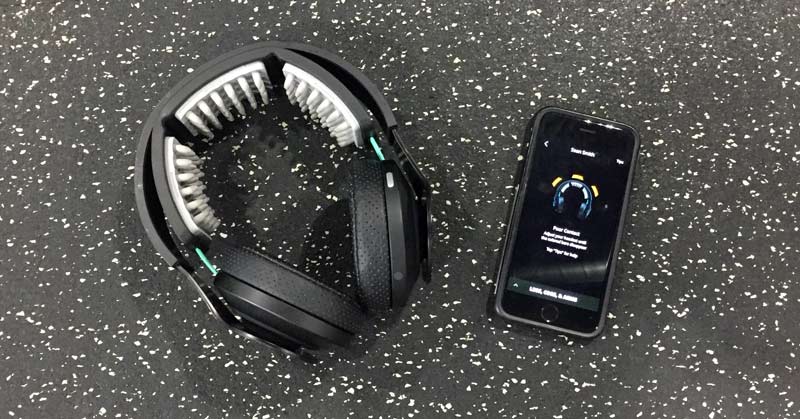
So far, what we know is that we had no adverse reactions, but there may have been a slight electrical burn with one coach. Nobody during the investigation had a poor response to the Halo Neuroscience tDCS, either subjectively or with any type of power or motor skill output. I talked to one NFL strength coach who said he performed his squat better than expected, but the skills of snatching and cleaning were impaired during the period of use. He was adamant that it wasn’t fatigue, so perhaps some people respond negatively and each application should be individualized.
Should You Try Brain Stimulation?
We think the very act of trying any brain performance product is a smart idea, provided that you have a plan. My issue with most of the marketing and hype with sports performance products is the fact that all of them seem to promote mythical performance changes that even doping can’t provide.
It’s a smart idea to try brain performance products, as long as you have a plan, says @SPSmith11. Share on XThe experience we had with Halo was interesting, but it’s going to take a lot of published research with carefully designed studies for us to give it our blessing. What we can share is that the brain is only going to grow in popularity with training and, as more information is available, coaches will be better able to use all of the science in an applied way, be it with technology or just with the human touch.
Special Note: Sean Smith of Exceed Sports Performance and Fitness performed most of the experimentation and follow-up. In addition to Sean, Hakan Andersson was also instrumental with experimentation.
Since you’re here…
…we have a small favor to ask. More people are reading SimpliFaster than ever, and each week we bring you compelling content from coaches, sport scientists, and physiotherapists who are devoted to building better athletes. Please take a moment to share the articles on social media, engage the authors with questions and comments below, and link to articles when appropriate if you have a blog or participate on forums of related topics. — SF
[mashshare]




